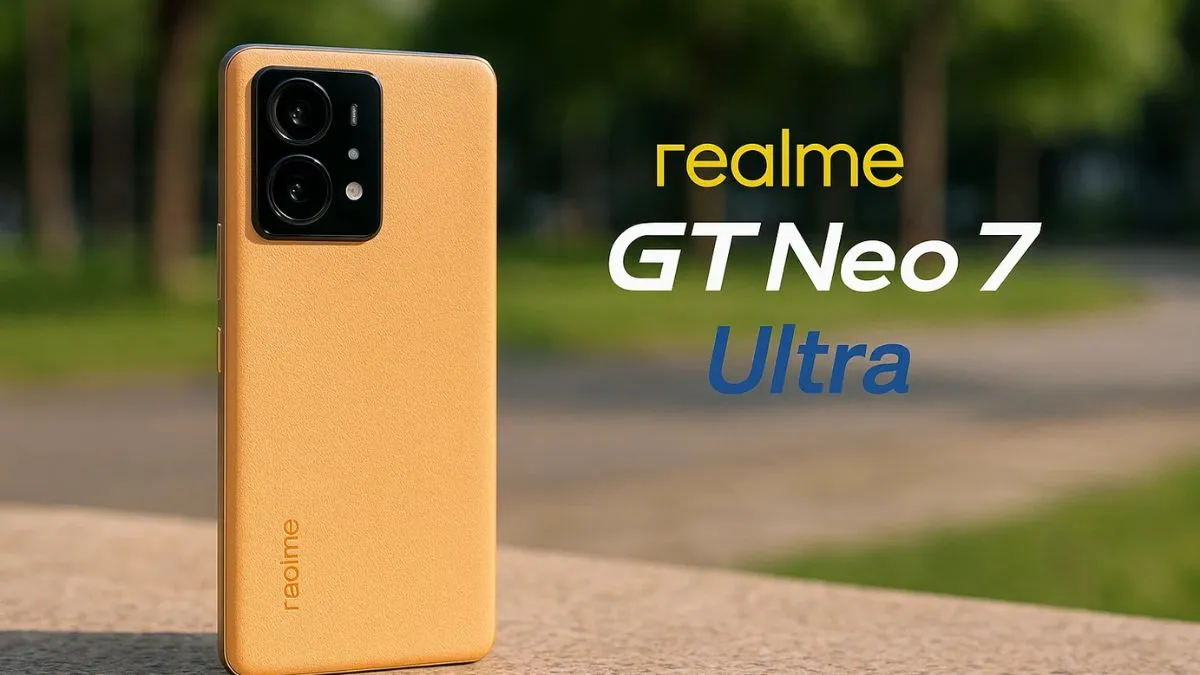The Realme GT Neo 7 Ultra represents a bold leap into flagship territory—melding bleeding-edge hardware, gamer-centric features, and flagship camera technology. Designed to push boundaries, this imagined device aims to take on top-tier competition while retaining Realme’s value DNA.
Highlight Table: “Realme GT Neo 7 Ultra” Key (Expected) Specs
| Feature | Expected / Speculated Detail |
|---|---|
| Display | ~6.8-inch LTPO AMOLED, 1.5K or QHD+, 120 Hz (adaptive) |
| Processor / Chipset | Possibly a next-gen Snapdragon or advanced Dimensity flagship |
| RAM / Storage Options | 12 GB / 16 GB / maybe 18 GB + 256 GB / 512 GB / 1 TB |
| Rear Cameras | Triple / quad setup: ~200 MP main + ultra-wide + periscope telephoto + depth / macro |
| Front Camera | ~32 MP with advanced AI features |
| Battery | 5,500 – 6,500 mAh (or “Titan / Silicon-carbon” cell) |
| Charging | 100 W – 150 W wired, 50 W+ wireless (speculated) |
| Connectivity | 5G, Wi-Fi 7, Bluetooth 5.4+, NFC, UWB? |
| Other Features | Stereo speakers, vapor chamber / graphene cooling, IP68 / IP69 water/dust resistance, curved edges, in-display ultrasonic fingerprint |
| Software / Updates | Realme UI (based on Android), 4–5 OS version upgrades + long security support |
Design & Display
For the GT Neo 7 Ultra, one can expect a refined, premium design. Think slim bezels, perhaps a quad-curved edge screen, glass back with matte or gradient finish, and a substantial camera module. The display would likely feature LTPO tech for adaptive refresh rate (1 to 120 Hz), rich HDR support, and peak brightness beyond 2500 nits for outdoor visibility.
Given Realme’s trajectory, they might push for ultra-high sampling rate (2000+ Hz) for gaming responsiveness, and advanced display protection (Gorilla Glass Victus / Victus 2 or equivalent).
Performance & Thermal Management
Expect a flagship-level chipset—either Qualcomm’s upcoming flagship or a top-tier MediaTek Dimensity—fabricated on a cutting-edge node (3 nm or 4 nm). With LPDDR5X RAM and UFS 4.0 / 4.x storage, performance should be snappy.
Thermal design would be key: multiple heat dissipation layers, vapor chambers, graphene sheets, and possibly phase change materials to keep performance stable under sustained loads (gaming, video editing).
Camera System
Realme has been aggressive in camera innovation lately. For this Ultra version:
- Main Sensor: likely a huge ~200 MP or 108 MP flagship sensor with OIS.
- Telephoto / Periscope: 5× or 10× optical zoom, possibly up to 120× digital.
- Ultra-wide: wide FOV with good low-light performance.
- Macro / Depth or sensor with extra capability.
Advanced AI algorithms, multi-frame HDR, Night mode enhancements, 8K / 4K video capabilities, and computational photography will be central. The front camera might also enable high-fidelity selfie and video features (e.g. portrait video, AI bokeh).
Battery & Charging
Realme will likely pack a high-capacity battery (say 6,000 mAh+). Charging is expected to break speed records—100 W to 150 W wired, with support for 50 W+ fast wireless and reverse wireless charging.
They might introduce silicon-carbon or next-gen battery chemistries to boost energy density and battery life cycles.
Software & Features
It would run Realme UI layered over Android (latest version), with feature enhancements like:
- Advanced AI modes (scene recognition, real-time editing, voice / visual search).
- Gaming optimizations: haptic feedback, game assistant mode, ultra-smooth frame rates.
- Connectivity: Wi-Fi 7, advanced 5G, UWB (if included), Bluetooth 5.4+.
- IP68 / IP69 rating for durability.
- Stereo speakers with spatial audio / tuning.
Update policy would be important—Realme might commit to 4 major OS upgrades + 5–6 years of security updates.
Pros & Possible Trade-offs
Pros
- Flagship performance at competitive price (Realme’s strength)
- Strong battery and ultra-fast charging
- Cutting-edge cameras with zoom capabilities
- Gaming-ready display and thermal control
- Feature-rich package with connectivity and durability
Trade-offs / Challenges
- Heat management under extreme load
- Battery longevity under ultra-fast charging
- Software optimization (Realme UI refinement)
- Real-world camera results versus rivals






